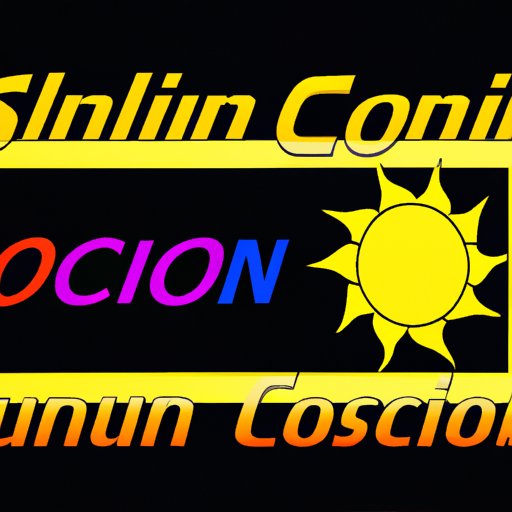Introduction: What is Skin Cancer?
Skin cancer is the most common type of cancer in the United States. It is caused by abnormal cell growth in the outermost layer of the skin, known as the epidermis. This abnormal cell growth can be either malignant (cancerous) or benign (non-cancerous).
There are three primary types of skin cancer: basal cell carcinoma, squamous cell carcinoma, and melanoma. Basal cell carcinoma is the most common form of skin cancer and is generally localized to the area of the skin where it began. Squamous cell carcinoma is more aggressive than basal cell carcinoma and is more likely to spread to other parts of the body. Melanoma is the most serious type of skin cancer and can spread rapidly if not treated early.

Discuss the Role of Sun Exposure in Skin Cancer
The sun emits ultraviolet (UV) radiation, which is a major cause of skin cancer. When UV radiation penetrates the skin, it damages the DNA of the skin cells. This damage can lead to mutations in the cells that cause them to grow out of control, forming tumors. Sun exposure is the primary cause of both basal cell carcinoma and squamous cell carcinoma.
In addition to causing skin cancer, sun exposure can also lead to premature aging and other skin problems, such as sunburns, wrinkles, and discoloration. To reduce your risk of skin cancer, it is important to limit your exposure to the sun and wear sunscreen when outdoors.
Examine the Impact of Genetics on Skin Cancer Risk
Genetics play an important role in determining a person’s risk of developing skin cancer. Certain genetic mutations, such as those associated with the inherited syndrome called xeroderma pigmentosum, can make a person more susceptible to skin cancer. Additionally, people with fair skin may be at an increased risk of skin cancer due to their inability to produce enough melanin, a natural sunscreen.
It is important to note that having a family history of skin cancer does not necessarily mean that you will develop skin cancer yourself. However, it is important to be aware of any family history of skin cancer and take steps to reduce your risk.
Explore the Effects of Ultraviolet Radiation on Skin Cancer
Ultraviolet radiation is divided into three categories: UVA, UVB, and UVC. UVA radiation penetrates deeper into the skin than UVB radiation and is responsible for causing wrinkles, age spots, and other signs of premature aging. UVB radiation is more damaging and is the main cause of sunburns. UVC radiation is the most dangerous type of UV radiation but is mostly absorbed by the ozone layer and does not reach the earth’s surface.
All three types of UV radiation have been linked to skin cancer. UVA radiation has been linked to both melanoma and non-melanoma skin cancer, while UVB radiation has been linked primarily to non-melanoma skin cancer. UVC radiation is the most powerful type of UV radiation and is the most likely to cause skin cancer.

Evaluate the Relationship Between Tanning Beds and Skin Cancer
Tanning beds emit both UVA and UVB radiation, making them a major source of skin cancer. Studies have shown that people who use tanning beds are at an increased risk of developing both melanoma and non-melanoma skin cancer. The risk is even greater for people who begin using tanning beds before the age of 25.
To reduce your risk of skin cancer, it is important to avoid the use of tanning beds. If you want to tan, opt for a self-tanner or bronzer instead.
Analyze the Role of Pollution in Skin Cancer Development
Air pollution, water pollution, and soil pollution can all contribute to skin cancer. Certain pollutants, such as polycyclic aromatic hydrocarbons (PAHs), can damage the skin’s cells and increase the risk of skin cancer. These pollutants can enter the body through inhalation, ingestion, or direct contact with the skin.
Additionally, environmental factors such as high temperatures and low humidity can increase the risk of skin cancer. To reduce your risk of skin cancer, it is important to limit your exposure to air, water, and soil pollution.

Investigate the Link Between Certain Chemicals and Skin Cancer
Certain chemicals, such as arsenic, benzene, and vinyl chloride, have been linked to an increased risk of skin cancer. These chemicals can enter the body through inhalation, ingestion, or direct contact with the skin. Additionally, certain medications, such as psoralen and coal tar, can increase the risk of skin cancer when used in combination with UV radiation.
To reduce your risk of skin cancer, it is important to limit your exposure to these chemicals and be aware of any medications you are taking.
Conclusion:
Skin cancer is the most common type of cancer in the United States and is caused by abnormal cell growth in the outermost layer of the skin. Sun exposure, genetics, ultraviolet radiation, tanning beds, pollution, and certain chemicals can all increase the risk of skin cancer. To reduce your risk of skin cancer, it is important to limit your exposure to these risk factors and protect your skin from the sun.


